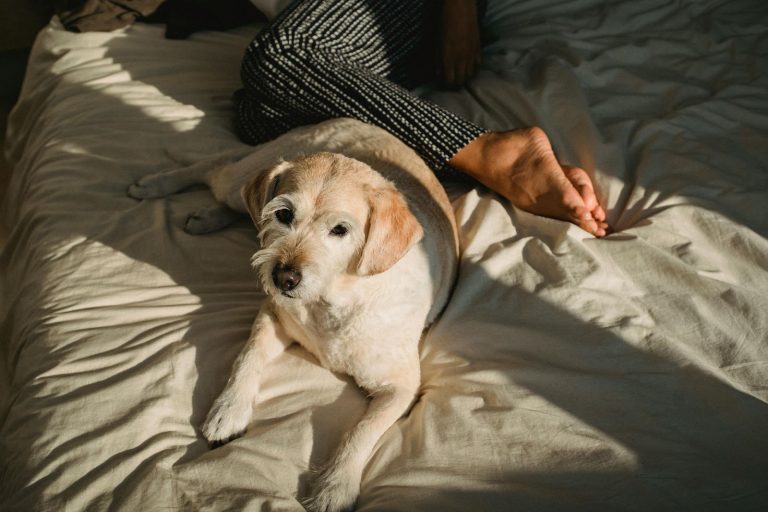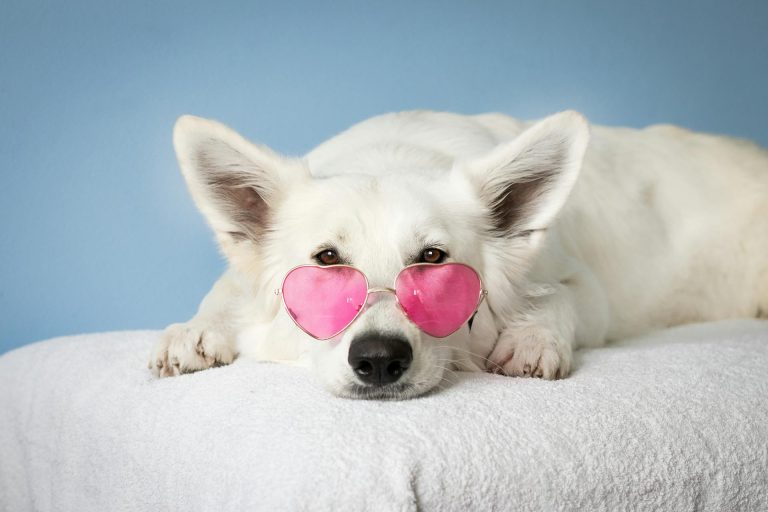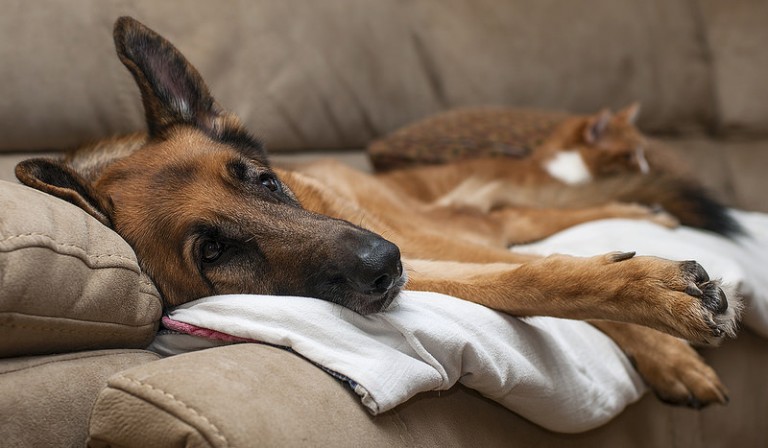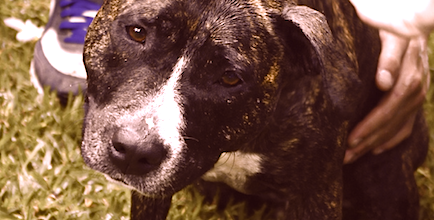Spotlight On: Bomb-Sniffing Dogs
Explosive detection dogs are on an unbelievably important mission. Find out how they are trained and which breeds are top candidates for jobs like this.
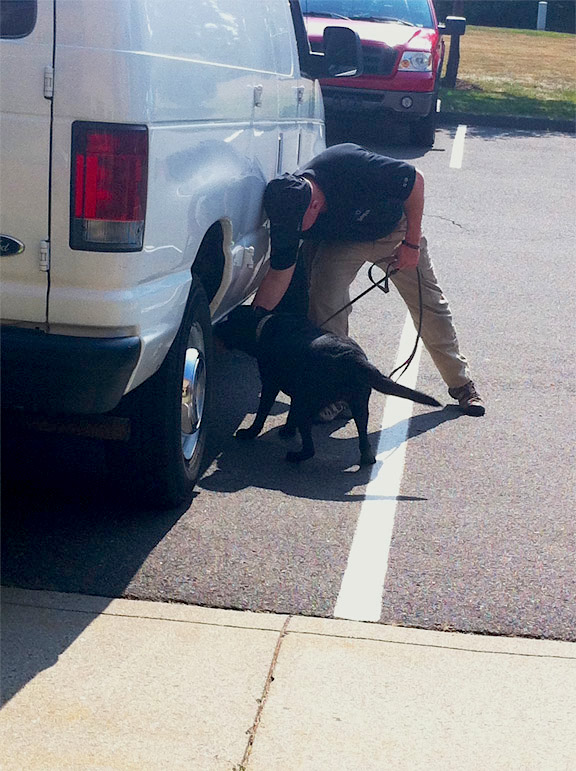
Trainer Joe Martel attaches a magnetic box containing an explosive odor to the bottom of a van and encourages Lucia, a black Labrador Retriever, to take a sniff. As soon as she does, she is rewarded with a treat.
Each time, he places the box farther in and encourages the dog to go deeper underneath. Her tail never stops wagging, and her eyes sparkle with excitement. She is having the time of her life with no any idea that one day, she could save lives.
Lucia is among the crop of new “green” dogs who have come to MSA Security’s new 26,000-square-foot, state-of-the-art EDC (Explosive Detection Canine) Training Facility in Windsor, Connecticut.
Martel, a retired Connecticut State Police officer, bomb technician and EDC handler, prepares handlers to get government validation and is responsible for the imprintation (the process of training a dog to recognize and remember explosive odors) of rookie canines.
Not all dogs are suited for this type of work. “You need a dog that’s very enthusiastic,” says Anthony Jerone, owner of Anthony Jerone’s School of Dog Training & Career Inc., and former Vietnam K-9 Corps Specialist and founder of the New York City Transit Authority Canine Unit. “They need to have a strong play or food drive.”
MSA acquires its dogs from different foundations, says Michael Wynn, director of canine training and EDC team certification at MSA and former Connecticut State Police trooper and canine handler.
One source is Puppies Behind Bars, where chosen inmates are assigned 8-week-old puppies to raise and train until they’re ready to start additional training as service and bomb dogs at around 2 years old.
MSA also gets dogs looking to make a career change after flunking out of Guiding Eyes for the Blind’s guide dog school in Yorktown Heights, NY — those squirrel-chasing, want-to-party dogs with way too much energy and curiosity for guide work are often a perfect fit for explosive detection work.

Don’t leave your pet’s safety to chance
Sign up for Petful recall alerts today.

The Canine Olfactory Advantage
When it comes to nose work, dogs rule.
Why? Because dogs have 200 million nasal olfactory receptors — humans have only 5 million. One-third of a dog’s brain is devoted to smell. The area dedicated to identifying different scents is 40 times larger than the same area of the human brain.
So when a dog sniffs your perfume, he can smell the individual scents of aldehydes, bergamot, lemon, neroli, ylang-ylang, jasmine, rose, lily of the valley, iris, vetiver, sandalwood, vanilla, amber and patchouli that constitute the fragrance. Humans just smell Chanel No. 5.
Explosive odor is broken down into 5 basic explosive groups called families. By imprinting the main explosive ingredient in each family on the dogs, it allows them to recognize a vast variety of commercial, military and improvised explosive devices.
At MSA Security, future bomb dogs are introduced to the 5 families of explosive odor through perforated “scent cans” containing samples of uncontaminated chemicals lined up in rows and implanted in luggage and shipping boxes.
The dogs are first trained to find “low explosives,” says Wynn, which include gunpowders such as black powder, smokeless powder and pyredex. Once the dogs learn that odor, they move on to the next family, high explosives, which have TNT as their main ingredient.
“As long as you imprint the dog on uncontaminated TNT, the dog can then branch out into many different combinations of commercial and military explosives that contain it,” says Wynn. Other main ingredients that the dogs imprint are RDX and PETN.
Most law enforcement and military agencies use a play/reward system in the imprintation process. The dog smells a small amount of explosive odor and is then rewarded with some kind of toy. “That’s called operant conditioning,” Wynn says. The other methodology is traditional food reward. The dogs learn to sit as an alert and stay at the source when they detect an explosive odor.
Labs Are Top Dogs
MSA prefers working with Labrador Retrievers.
“We do use German Shepherds and other sporting and herding breeds, but we like using the Labrador for a number of reasons,” says Wynn. “Most Labradors are very ‘food stupid.’ They love food. The dog smells the explosive odor that we’re imprinting, and they get a small piece of food. Through many repetitions, the dog retains the odor, and then never loses it and the appropriate response.”
And if Labs are food stupid, German Shepherds are play stupid — as Soleil, a black GSD obsessed with her ball, demonstrated. These dogs are imprinted by using a favorite toy as the reward.
When the dog isn’t working, we want him in the family home, relaxing and being a pet, leading a normal dog’s life.”
The dogs are imprinted on a course designed by the MSA team.
“It takes 6 to 8 weeks for the dogs to learn how to do complete searches of vehicles, luggage, boxes, cargo and room searches,” says Wynn.
They learn where to find the scent through the scent cans embedded at the corners of cartons, the seams in luggage, the wheel wells and undercarriage of parked vehicles. During this time, the dogs stay at Day Hill Kennel, a state-of-the-art facility across the road.
“When you work with a dog and he hits on the odor 10 [times] out of 10, you know he’s ready,” says Jerone. “By reading his body language and knowing the dog, you can tell. He’s alert, he refuses to remove himself from the odor, and he waits there until you give him his reward.”
Finding Their Handlers
After the dogs are imprinted, the former law enforcement and military handlers hired by MSA arrive at the center to work with the dogs.
“We sit with the handler and gain as much information as we can about their lifestyle and where they live,” says Wynn. “Then we try to marry up the dogs based on what information we’ve gotten from the handlers and the working abilities of the dog.”
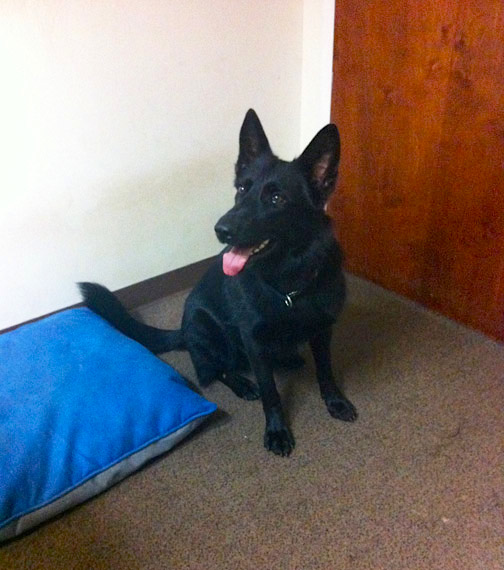
The handlers begin working with their dogs, and within 2 or 3 days they find the match that works best for the dog and for the handler.
During the 3-week training period, the dogs stay with their handlers at their hotel rooms. Once handler and dog go home, they go through orientation at the work locations until the dogs are accustomed to the environment.
Some locations need more acclimation than others. “New York City can be kind of traumatic, and the dog won’t have the confidence he needs at first,” says Wynn. “But in 1 or 2 days with the handler, the dog gets comfortable with the noises and smells and the general commotion. That’s what we call the orientation phase.”
From that point forward, the dog stays with that handler.
10-Hour Work Days
They generally work 8 to 10 hours a day, 2 or 3 days a week.
“When the dog isn’t working, we want him in the family home, relaxing and being a pet, leading a normal dog’s life,” says Wynn.
MSA has a process for deciding how long a dog works. “At the 8-year birthday, we begin the process of evaluating and accessing the dog for the transition into the retirement stage,” says Wynn. “We look at physical ability to see if the dog still has the drive and the ability to work.”
They also take into consideration the company vet’s assessment. Dogs are retired when they reach 9 years old.
Every handler is given the option to keep his or her dog. “I’ve been with MSA for 10 years, and I only know of 2 occasions where handlers haven’t kept their dogs because they didn’t have the space for 2 dogs,” says Wynn. “All the other handlers took their dog home, and then the dog gets to lead a dog’s life. He gets to lie on the couch, turn on Animal Planet — and relax.”
* * *
Editor’s Note:
This article is part of an occasional series about various professional working dogs in the United States. Previously, we spotlighted guide dogs for the vision-impaired.

